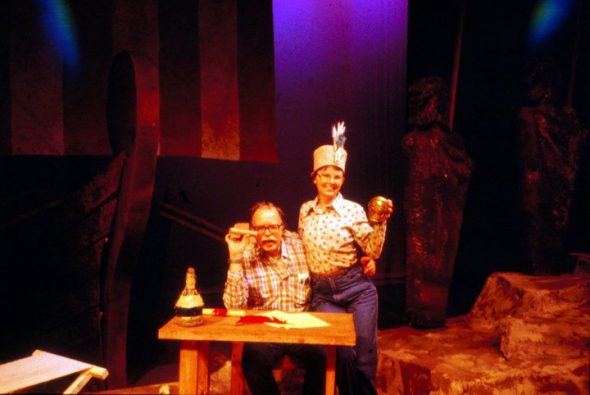
Drake alumni raised $60,000 to renovate Studio 55, known henceforth as William S.E. Coleman Theatre (or, as friends and former students joke, “The Doc Box”)
The year was 1966. Judy Luster, FA’67 was entering her senior year at Drake University when William S.E. Coleman joined the faculty as chair of the theater department.
Luster had mainly studied acting, with a bit of costume work on the side. Coleman—students called him “Doc”—took one look at her sewing handiwork and put her in charge of costuming for major main stage productions.
“Doc had an ability to sense what your gifts were, and he found ways to push you into exploring them to the max,” Luster remembers. “There wasn’t a costuming department at Drake at that point—he just made me a designer. He sat me down in the earliest design meetings and he trusted me. That trust made me want to be worthy of it, and responsible to it. I didn’t want to let him down.”
Coleman Studio Theatre Dedication
Dr. William S.E. “Doc” Coleman was one of the Drake University theatre department’s most longstanding and beloved faculty members, serving the university from 1966 until his retirement in 2002. This month, Drake University dedicated William S.E. Coleman Studio Theatre, formerly known as Studio 55 and Studio Theatre, in honor of the professor who changed so many lives. Nearly 250 students donated more than $60,000 to renovate the space in honor of Doc, who died on July 8, 2015.
Also during the reunion:
• The university unveiled a painted portrait of Coleman, donated by Chicago artist David Marcet, FA’97;
• Jim Uhls, FA’79, directed a scene from David Mamet’s “American Buffalo,” with the same actors who originally played the scene as a student theater production at Drake nearly 40 years ago. The cast included Steve Bannos, who has played roles in comedic blockbusters directed by Judd Apatow and Paul Feig.
The bond she developed with Coleman in just one year changed the course of her professional life. She recently retired from a lengthy career as high school drama teacher in Westport, Conn., where her memorable students include Alisan Porter, winner of season 10 of television’s “The Voice,” and Kevin Conroy, who voiced the cape crusader in “Batman: The Animated Series.” She received favorable reviews from The New York Times for her costuming work on a production of “Four Saints in Three Acts,” an opera by Gertrude Stein and Virgil Thompson.
Luster is one of countless students to have been inspired by Coleman during his career at Drake University, which spanned 36 years. She recently showed her gratitude to the late professor by becoming one of nearly 250 fellow alumni and friends who collectively donated $60,000 to a special memorial fund in Coleman’s honor.
Drake University held a dedication ceremony for the William S.E. Coleman Studio Theatre, formerly known as Studio 55 (and before that, Studio Theatre), on Saturday, June 18, as part of a weekend-long theatre alumni reunion. Donations to the memorial fund will be used to renovate the theater space, which Coleman helped to design, and any remaining funds will lay the groundwork for a guest artist program.
“Doc dedicated his life to live theater,” said Michael Emerson, FA’76, whose acting career includes Broadway and Off-Broadway credits and leading roles on television in “Person of Interest” and “Lost.” “What better way to honor the man, to call him to mind, than by putting his name above the door of the live theater space that he helped to design?”
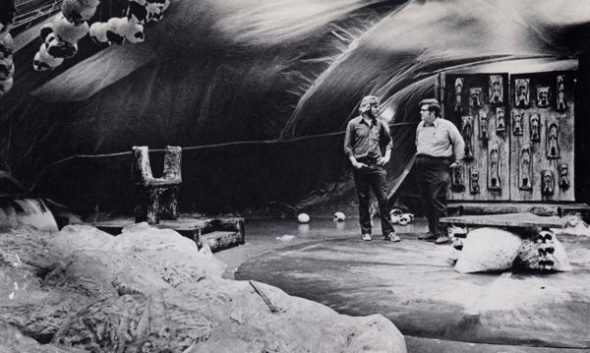
SACRED SPACE
The studio space was sacred to Coleman. As chairman of the Department of Theatre Arts he provided creative inspiration for the design of the Studio, which was unveiled with the completion of Harmon Fine Arts Center in 1972. He guided more than three decades’ worth of imaginative productions there, including—students recall—a production of “Oedipus Rex” that was encased in a giant bubble. Another play seated members of the audience inside the set’s furniture, with cast members acting around them.
Where non-theatre majors could see the space as nondescript, or even imposing, Coleman taught students like Daniel Neiden, FA’80, to see endless opportunity.
“The space he designed, you could put the audience anywhere, you could use different entrances… he made it so you could develop an idea you had, a concept, in any number of ways,” said Neiden. “You could divide the space in any way you felt inspired to do so. I took that as a metaphor for life.”
Coleman ran the department like a conservatory, requiring students to learn all the necessary staples of thespianism. It’s a comprehensive model of education, which remains in practice at Drake today, that focuses on a “total theatre” approach.
“In some other schools, you are lucky if you get on stage early in your academic career,” said Coleman’s wife, Linda Robbins Coleman, FA’76 a Drake music alumna and longtime composer-in-residence with symphony orchestras and theatres. “Under Doc’s guidance, you couldn’t just come to Drake and be an acting major. You had to learn set design, costuming, box office—every aspect of theater organization and management.”
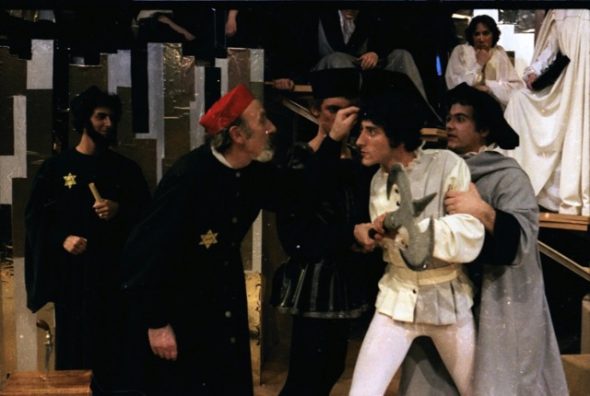
Linda worked with her husband in the department from 1977-97. She scored 35 productions and served as Doc’s assistant director on seven productions of ancient Greek plays. “I saw first hand Doc’s powerful and positive influence on his students,” she said. “Teaching was his passion.”
The Colemans were creative and business partners throughout their forty years together. Following his experiences as a combat Infantryman in Germany during World War II, for which he was awarded two Bronze Stars, Coleman took to theatre as a social good.
“I felt an obligation to do more with my life, to live at least one extra life for those who died during the war,” he wrote in his upcoming memoir, “Boyhood’s End,” which is set to be published later this year. “I felt a desire to make the world about me more humane. Teaching seemed to be one way to do this. I wanted to add something to a world I had helped destroy.”
Neiden, a New York-based theater professional with work that spans from the avant-garde to mainstream commercial theater, said the broad-based education he received at Drake gave him the preparation he needed to launch a lengthy career as a socially conscious actor, director, and producer. He eventually collaborated with Coleman and Moody on “A Future Imperfect.”.
“When I was in New York early on in my career, I’d come here as an actor and I was making money running lights in a studio or designing sound for a production,” Neiden said. “I would not have those skills if not for the department [Coleman] designed. He’s one of the few enduring influences on who I am, and what I do.”
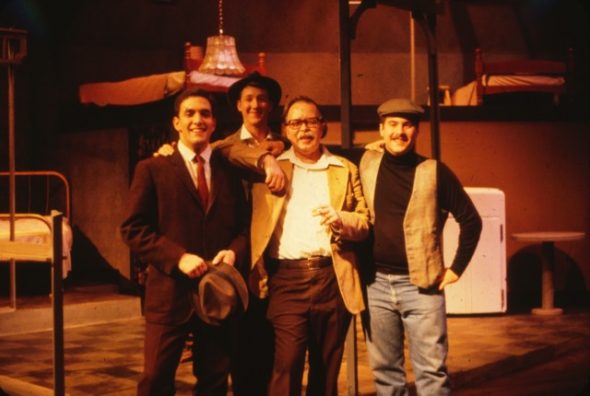
ENDURING INFLUENCE
Coleman kept in touch with as many of his former students as he could, regardless of whether they worked in the theater profession.
Between the time he left the classroom in 2000 and his death in July 2015, Bill Coleman and Linda Robbins Coleman received more than 5,000 calls, emails, and letters from alumni, many of whom consider Linda and Doc to be a second set of parents.
“It took me almost 20 years to become a working actor,” recalls Steve Bannos, FA’82. “There was never any kind of shame from Doc, or any kind of pressure. Doc clearly, clearly had the ability to connect with his students, and not in a superficial way. In a really passionate, human way… He was like a father, but a father I could smoke cigarettes and swear in front of.”
To some, he was also a colleague. When he made his Off-Broadway theater debut in August 2013, becoming at age 87 the oldest living playwright ever to do so, he contacted the producer and recommended Drake alumna Allison Moody, AS’00, as director. The producer immediately hired her. He couldn’t have been happier to have Moody at the helm of his play, “A Future Imperfect,” which opened at The Celebration of Whimsy Theatre in New York City.
“I often dreamed of having an Off-Broadway production for one of my full-length plays, but never in my wildest imaginings did I think that one of my best directing and acting students would be guiding my play to its opening night,” Coleman said at the time.
But Bill and Linda Coleman’s day-to-day correspondence from alumni seemed like a mere trickle in comparison to the flood of condolences that came when Doc died last year. Alumni didn’t just call and write, they flew from across the country to honor him and visit with Linda.
Inspiration for a memorial came quickly. Three days after Doc passed away, Linda was sitting alone at her breakfast table drinking coffee, reading the newspaper—the time, she remembers, was 10:37 a.m., and she had a cooking show on the television—when an epiphanic voice whispered in her ear.
“It was like someone in the room said, ‘the William S.E. Coleman Studio Theatre,’” Linda said. “Maybe that was the last gasp of his spirit. And I thought, ‘Well, duh—that’s something that’s been waiting to happen.’”
She made a few phone calls, which quickly become hundreds of phone calls. Within four months, alumni had rallied to raise $50,000. Now the total is over $60,000. In addition to cash, alumni have also contributed a collection of their favorite Coleman sayings—Doc-isms, as they’re known—to appear on plaques in the Studio. David Marcet, FA’97, a Chicago artist who had acted in a Coleman production when he was an undergraduate art student at Drake, painted an oil portrait of Coleman to hang in the lobby at the entrance to the Coleman Theatre.
AN EPIC PERFORMANCE
This month’s theatre reunion was a who’s-who of Drake Theatre professionals. The reunion included at least one star-studded performance that would have meant the world to Doc—it was directed by Jim Uhls, FA’79, the screenwriter of Fight Club; the cast included actor Steve Bannos, who is recognizable for his television and film roles, including several Judd Apatow and Paul Feig projects (including the upcoming “Ghostbusters.”)
A bit of backstory: Decades before anyone was talking about “Fight Club,” Uhls was a senior at Drake University. Part of the graduation requirement for some of the theater majors was to direct a student production. Uhls took a leap of faith and cast a first-year student named Steve Bannos in one of three demanding roles in his production of David Mamet’s “American Buffalo.”
At that time, Bannos would not have believed that he’d someday become an actor with roles in blockbuster comedy films, the cult hit television show “Freaks and Geeks” (on which he was also a writer),and presently, the new Netflix exclusive series “Love.” He arrived at Drake in fall 1978 on a theater scholarship, but he planned to transfer after one or two years.
Coleman and Uhls turned that idea on its head—Uhls by trusting him with a lead role in his production, and Coleman by nurturing his knack for comedic timing.
“There were two people in my acting life at Drake who convinced me I was good enough to go after a career in acting—and that was Doc and Jim Uhls,” Bannos said. “Those were my two dudes. They gave me the confidence to pursue it.”
Which brings us to this month’s reunion: As a deeply personal means of honoring Coleman, Bannos recruited Uhls to direct the opening scene of “American Buffalo,” with Bannos, John L. Bader, FA’80, and Hosmer Brown, FA’81, all reprising the roles they performed nearly 40 years ago. Bader and Brown have also stayed active in theater and entertainment as successful actors and producers.
“To go back and perform in this space, it’s [expletive] epic,” Bannos said. “That is a major life moment for me. You don’t get to go back, you know? But I get to go back.”
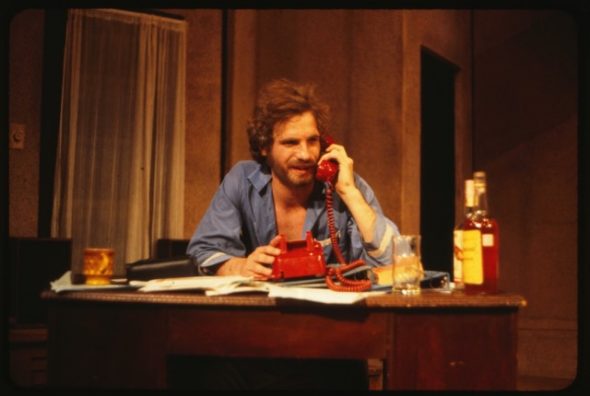
WARMTH AND MENTORSHIP
For his part, Uhls arrived at Drake with aspirations of becoming an actor. But Coleman recognized his spark for writing. He recruited Uhls to join his newly formed Playwrights Acting Company, an innovative program through which students had their written works produced on stage.
Uhls wrote and produced a one-act play, titled “D.C. Al Fine.” Then he worked with then-Drake theatre professor Michael Barton to stage a full version, titled “Where the Disallowed Play.” The year after he graduated, another professor produced the play on Drake’s main-stage. That resume-building experience helped him land a spot in UCLA’s Master of Fine Arts in Screenwriting program. Today, in addition to “Fight Club,” his writing credits span seven Hollywood films, including science-fiction stories “Jumper” and “The Leviathan,” which is currently in production.
Like many of Coleman’s former students, Uhls values the professor’s warmth and mentorship above any professional skills he imparted. At the end of the day, that’s why Uhls opened his Los Angeles-area home to Linda Robbins Coleman and a large group of theater alumni for an event that doubled as celebration of Doc’s life and memorial fundraiser.
“Doc was a very open, inviting person,” Uhls said. “He had gatherings at his house, he went and hung out with us, he’d talk about lofty ideas—or non-lofty ideas. He made himself available as a father, mentor, advisor, anything. That created a tremendous amount of people who feel very close to him. And he felt close to them, as well.”
LIMITLESS POTENTIAL
While the theatre reunion has ended, the next several generations of Drake University thespians-in-training will hone their craft in the William S.E. Coleman Studio Theatre. Its newly laid flooring is designed to respond to their leaps, stomps, and tumbles; its freshly painted walls are ready to be adorned with set-pieces or splashed with artificial blood.
“Often, when younger students arrive at Drake and they’re waiting to be told what they can do with a black box space like the Coleman Theatre,” said John Pomeroy, associate professor of theatre arts and the current chair of the Department. “Whereas a more accomplished professional looks at the same space and says: ‘These are the opportunities.’
“Doc was exceptional at that, and I try to follow his example—to put students first, to teach them to look beyond the color of the room, to look beyond what the room is not going to do for them. To teach students to consider the blank slate and see limitless potential.

